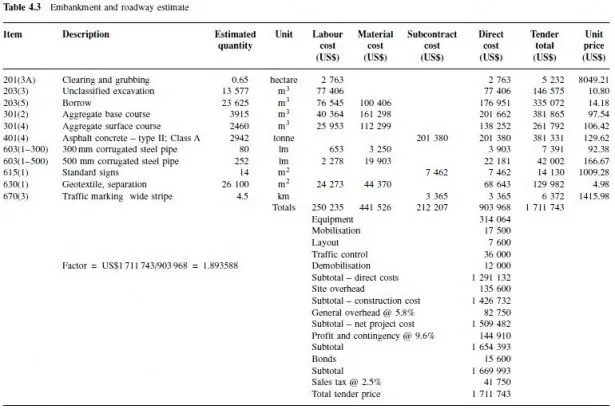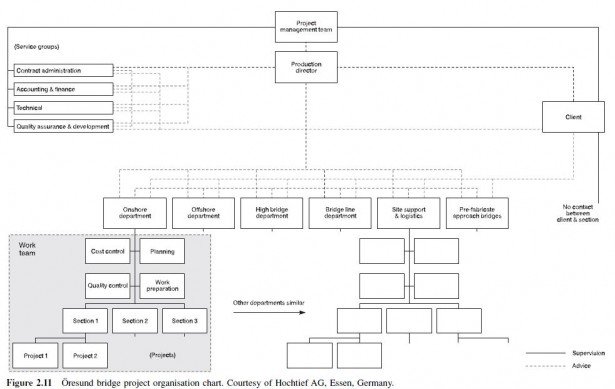Adding further complication to our consideration of project organisational relationships is the joint venture. Such an arrangement is a voluntary association of two or more parties formed to conduct a single project with a limited duration (Bennett, 1996). Joint venture agreements are formed between construction firms or between design firms and construction firms; they do not include owners. In a sense they are special purpose partnerships, because of their separate, temporary nature.
The usual purpose of such an arrangement is to spread the risks inherent in large projects and to pool resources in a way that permits the joint venture to execute a project that would be beyond the capabilities of one of the parties individually. Each party is called a coventurer, or joint adventurer; they begin with an agreement between themselves, whose purpose is to seek the contract for a project. If they are successful, the joint venture itself contracts with the project owner, with one of the coventurers stipulated as the sponsoring coventurer. The temporary combination of two or more companies allows them to pool construction equipment, personnel, office facilities, financial means and other resources. Each coventurer has an active role in performing the work and shares in any profits or losses, in accordance with their agreement (Clough and Sears, 1994).
Other reasons for forming joint ventures include the ability to meet mandated minority business enterprise requirements, if one of the coventurers is so classified, and to allow a contractor a chance to participate in a different type of work or a new geographical area (Tenah, 2001). During the construction of the Trans-Alaska Oil Pipeline in the 1970s, for example, many of the pipelines sections were built by joint ventures consisting of a company specialising in pipeline construction, with little or no experience in cold-regions construction, and a company with experience in the Far North but little pipeline background. They successfully pooled their talents, equipment, experience and financial strengths to carry out this US$ 9 billion project on a year-round basis over 3 years.
An interesting case study analysis of the use of joint ventures in developing countries suggests that these international construction joint ventures (ICJVs) can be appropriate market penetration strategies (Lim and Liu, 2001). One such project was the £414 million Pergau Hydroelectric Project in Malaysia. The joint venture partners were the local Malaysian company Kerjaya Binaan, Balfour Beatty of the UK and Cementation, also from the UK. The resulting joint venture was called Kerjaya Balfour Beatty Cementation (KBBC); it was organised as an independent operation in Malaysia and key management personnel were seconded from the coventurers for the duration of the 67-month project.
Note that joint ventures can be applied to most types of project delivery systems. The traditional designtenderbuild type of project might attract a joint venture contractor. Or, a designbuild project might be carried out by a temporary organisation consisting of an engineering design firm and a construction contractor; the temporary nature of the organisation is the key for the joint venture designation. Furthermore, a construction manager or project manager could be part of the project organisation in which a joint venture was responsible for field construction. And finally we should note that nothing precludes the use of subcontractors, subsubcontractors, subconsultants and other parties within the overall joint venture scheme. The case study at the end of this chapter describes an innovative approach to a joint venture organisation utilised for a very large construction project in Scandinavia.

